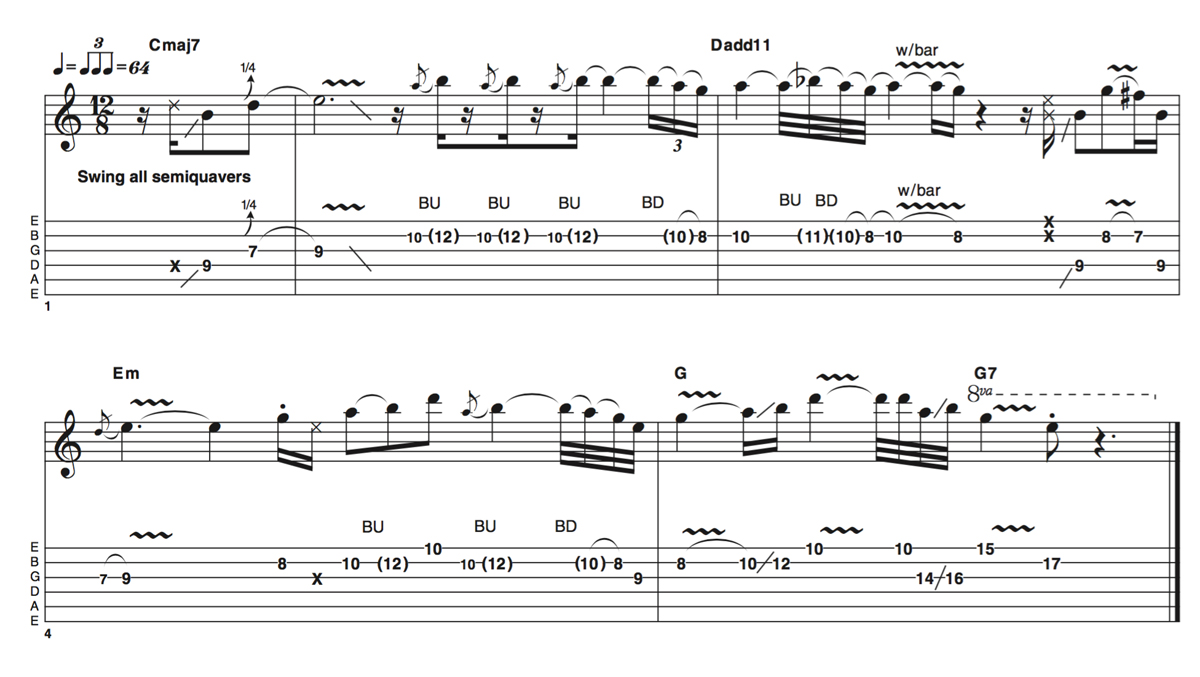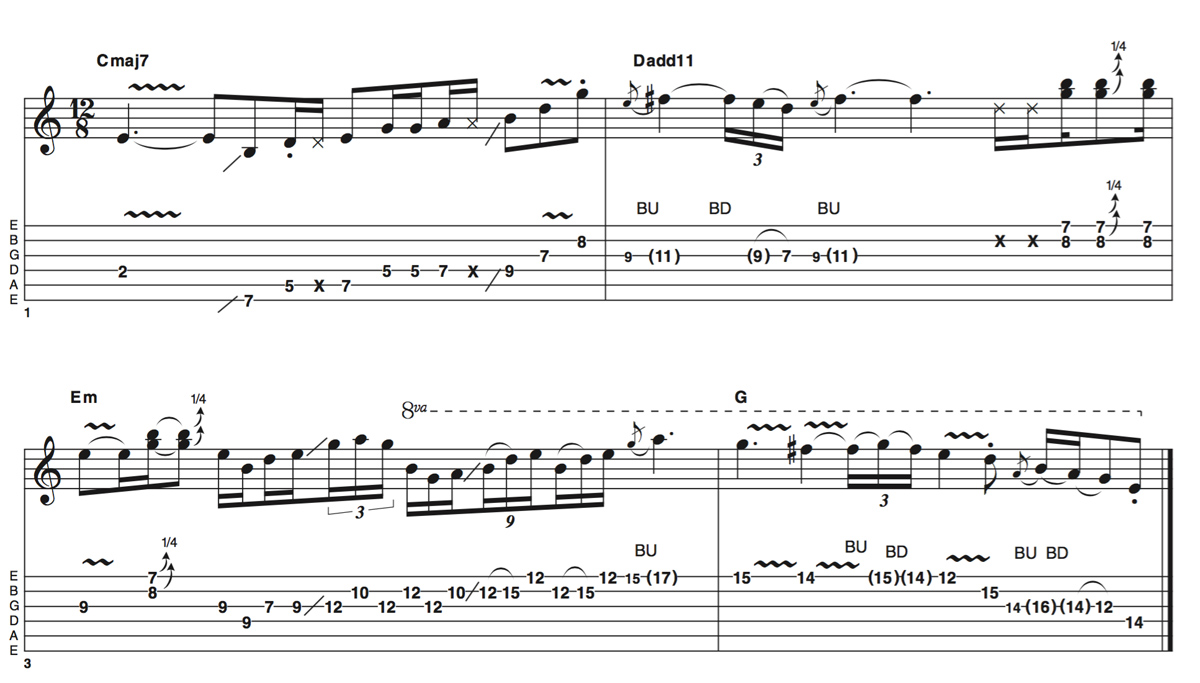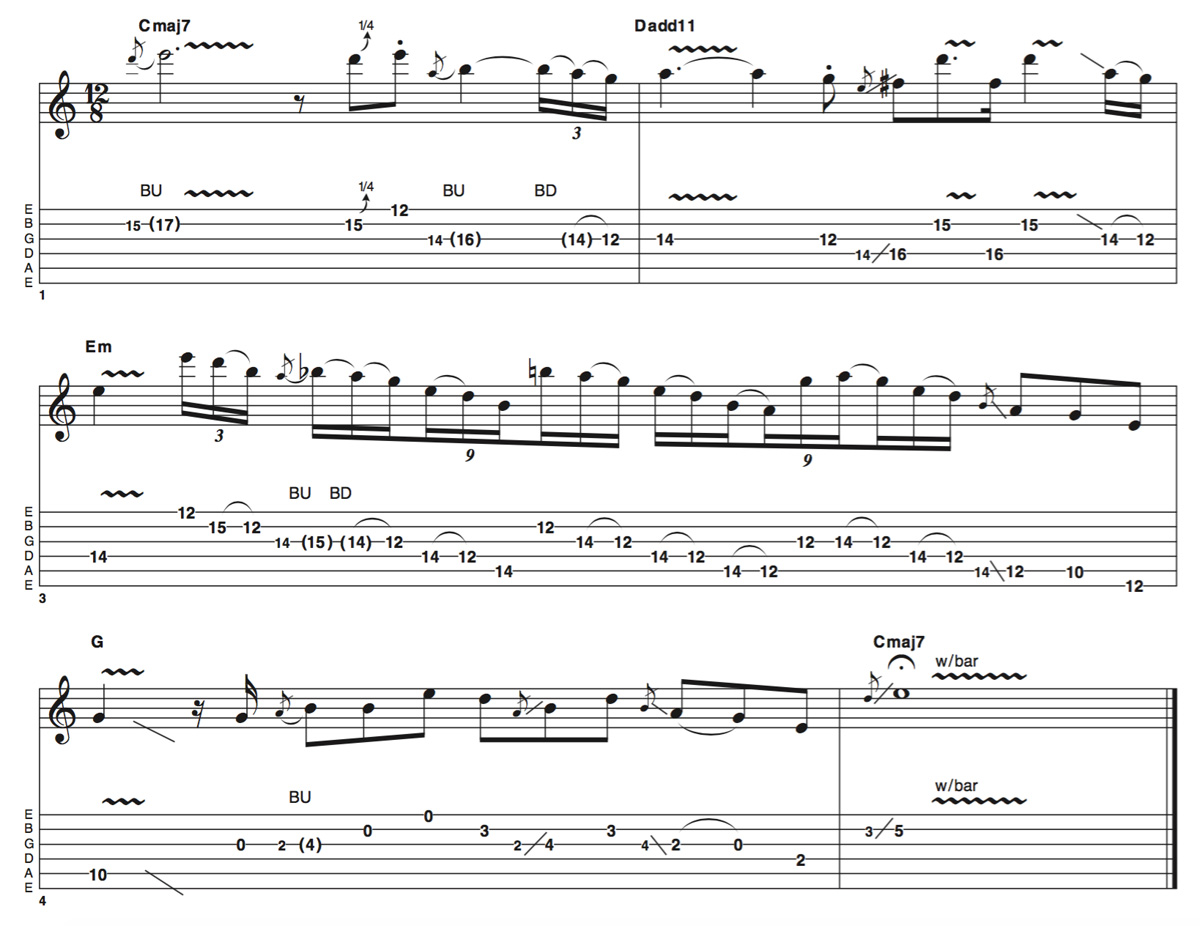Make your guitar solos truly epic with these awe-inspiring licks
Become a better blues player now with this lesson, complete with full audio examples and backing tracks

However much we might move with the times, there will always be an audience for epic guitar solos. Joe Bonamassa and John Mayer seem to have no trouble selling tickets, and I didn’t notice too many spare seats at David Gilmour’s Live At Pompeii, either…
Taking a blues approach (most great guitar solos do this, don’t they?) and going for some melodic pentatonic phrases is a large part of what is going on here – there are many more subtleties, though.
These details are not always the kind of thing you want to think about in the heat of the moment, as you may risk becoming somewhat mechanical as a player. However, techniques such as string bends, vibrato and slides do require work, and most great players acknowledge this.
The best way to evaluate your own playing is to record yourself improvising
While there will always be characteristics about our playing that we simply can’t help (others will call this your style), there are also elements of technique that benefit greatly from careful evaluation and refining.
The best way to evaluate your own playing is to record yourself improvising as un-self-consciously as you can manage (this also improves with practice) and check your pitching, vibrato, rhythmic phrasing and so on. It may surprise you to find that the areas that seemed strongest while you were playing are the areas you like least on playback.
Conversely, you may have been struggling in another section, yet this comes across as fresh and inventive when separated from the physical experience of playing it.
Ultimately, it’s very helpful to get to know your playing as a listener. The more you do this, the more you can apply the lessons learned to your playing in real-time.
All the latest guitar news, interviews, lessons, reviews, deals and more, direct to your inbox!
All these examples are played using the E minor pentatonic scale in its various positions. Hope you enjoy the licks and see you next time!
Example 1
When approaching this introductory phrase, get the patterns under your fingers first, then turn your attention to the finer details. The rhythms are notated as faithfully as possible, but you should definitely allow some wiggle room, rather than trying to be absolutely metronomic.
The rhythmic muted strings (played in swung 16th notes) add an awful lot of movement without you having to break into a sweat, too. There are just a couple of bits using the whammy, though no reason at all why there couldn’t be more if you’re feeling it.
Example 2
These repeated pre-bends require both accuracy and stamina. A slightly higher action can really help get under the string for a bit more traction without making things too much harder elsewhere; this can thicken the tone, too.
There are a couple of Gilmour-style doublestops and position jumps as we continue through. One of the nice things about a slow blues like this is the time to think!
Example 3
Switching to the bridge pickup can give a bit more focus if you’re planning to use a few lower notes like this.
It’s nice to have a bit of tonal variety, too. The pentatonic run towards the end of this example picks up the pace with a mixture of slides, hammer-ons and bends. There are lots of ideas that can be developed from this approach, so do experiment with this lick, rather than feeling this is in any way ‘definitive’.
Example 4
We're about to wind this solo down, but not before having some fun with this pentatonic pattern descending in patterns of six. These ideas are really useful for turning up the heat, but keep them fairly short rather than getting too carried away – we’re looking to stay melodic here.
Jumping back down to the open-position pentatonic brings things to a close here, giving a change from the higher register stuff!
Hear it here
Pink Floyd – Dark Side of the Moon
You’ll have heard this one before, but listen back to check from a player’s perspective how restrained and melodic David Gilmour’s playing is here. Time is a classic, but Money really shows him pulling out all the stops and staying relevant to the song. The rhythm playing is also worth studying, as Gilmour jumps in and out of phrases between the vocal lines.
David Gilmour – On an Island
Fast-forward 30 years or so and you’ll hear how David Gilmour is till concerned only with adding to the song. There is a veritable feast of his lead guitar on this album from 2006, but the title track and Take A Breath are particular high points to check out. For a more reflective approach with a cleaner tone, try album closer, Where We Start, for some lovely melodic phrasing.
Fleetwood Mac – The Best of Peter Green's Fleetwood Mac
If it’s immaculate phrasing that you want to hear, then this album will deliver, from
Albatross to Man Of The World, then Oh Well Parts 1 & 2. There could be a surprisingly aggressive touch to Peter’s playing at times, but he – like Gilmour – approaches things from a very melodic point of view, rather than superimposing his favourite licks over the changes!
As well as a longtime contributor to Guitarist and Guitar Techniques, Richard is Tony Hadley’s longstanding guitarist, and has worked with everyone from Roger Daltrey to Ronan Keating.





